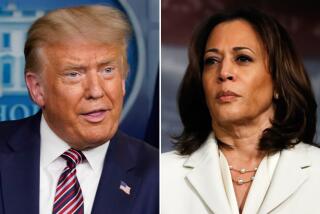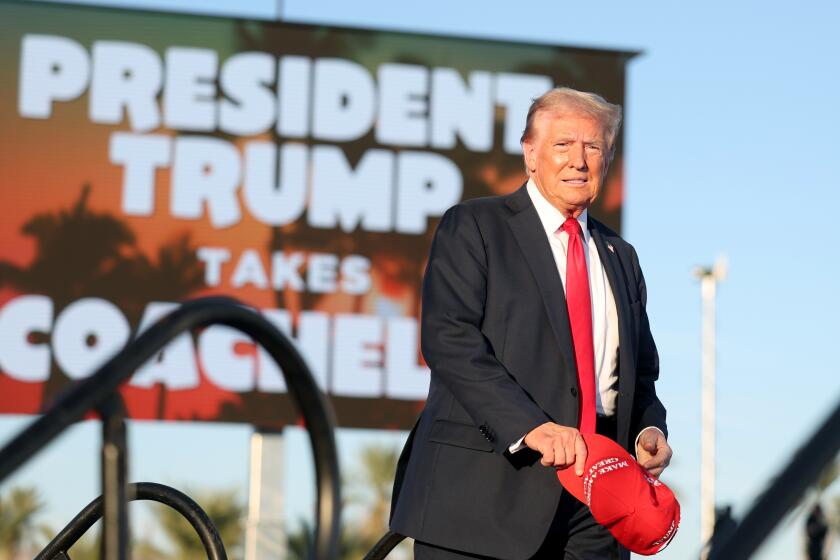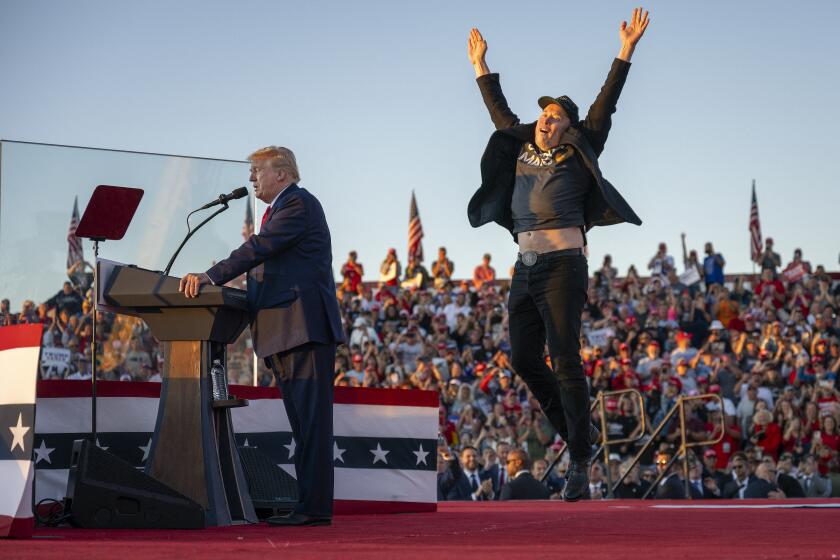Common Cause Lists State’s Top Campaign Donors
As it considers pushing an initiative to impose limits on campaign contributions, California Common Cause on Wednesday released its list of the top 10 contributors to 1992 legislative races, which together doled out nearly $8 million to state campaigns.
The nonprofit, self-styled watchdog of state politics contends that this relatively small group of contributors has a disproportionate influence on public policy because of the money it spends to elect legislators.
“These special interests dump millions of dollars into the river of campaign money that floods the Capitol and drowns out the voice of the public,” Common Cause lobbyist Kim Alexander said.
Among the top 10 were groups representing physicians, prison guards and public school teachers, as well as an alliance of conservative Christian businessmen who spent close to $1 million to elect like-minded legislators.
These 10 organizations paid $7.8 million to help elect candidates--10% of the total money received in all the legislative races combined in the two years leading up to the 1992 election.
“Now more than ever we need campaign finance reform,” said California Common Cause Executive Director Ruth Holton. She said she is actively seeking support to place a contribution-limit initiative on the November, 1994, ballot.
Holton said that among those expressing a strong interest in getting the issue before voters are Ross Perot’s United We Stand, the League of Women Voters and Campaign California, the political organization launched by state Sen. Tom Hayden (D-Santa Monica).
Unlike the federal system, which bars corporate and union contributions and puts caps on all other donations, California election laws allow unlimited contributions to state candidates.
In 1988, voters approved Proposition 73, an initiative that imposed contribution caps on state races. But just weeks before the 1990 general election, a federal judge struck it down as being unfair to challengers. The ruling released a deluge of large contributions, particularly in the race for governor between Democrat Dianne Feinstein and the eventual winner, Republican Pete Wilson.
The Common Cause study, titled “Deep Pockets,” points out that almost all the top 10 contributors lobby the Legislature heavily.
Topping the list was the California Medical Assn., which spent $1.3 million on legislative races during the 1991-92 election cycle. The group lobbied successfully to amend a bill that would have allowed hospitals’ disciplinary action against physicians to be made public.
The group’s chief lobbyist, Steven M. Thompson, attacked Common Cause for portraying it as “an unseen, unknowing monolith of purported evil . . . working against the public interest.” In fact, he said, the group uses its considerable clout to support a range of bills, including anti-smoking legislation, tougher pesticide standards and protection of health insurance benefits.
Common Cause also took aim at the Allied Business Political Action Committee, a group formed by four wealthy Southern California businessmen, including Home Savings and Loan heir Howard F. Ahmanson Jr., and newly elected Sen. Rob Hurtt (R-Garden Grove).
Hurtt asserted that his group has no specific agenda other than to improve the state’s business climate. And he said he told Common Cause that he would support campaign reform “as soon as we get a responsible . . . representation around here. Then let’s change the game rules and let’s keep it that way.”
The other groups on the Common Cause list were the California Correctional Peace Officers Assn., California Teachers Assn., California Trial Lawyers Assn., the California Real Estate Assn., the Assn. of California Insurance Companies, Atlantic Richfield, the California Dental Assn. and the California Optometric Assn.
More to Read
Get the L.A. Times Politics newsletter
Deeply reported insights into legislation, politics and policy from Sacramento, Washington and beyond. In your inbox three times per week.
You may occasionally receive promotional content from the Los Angeles Times.










